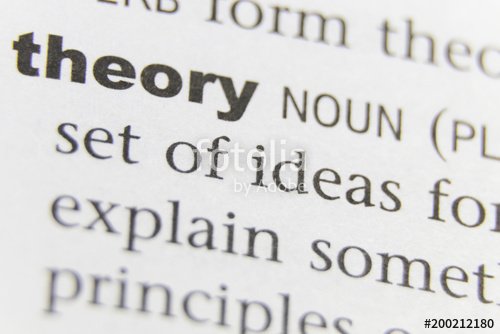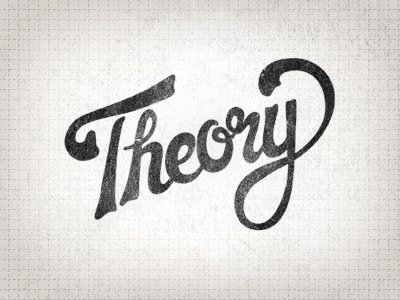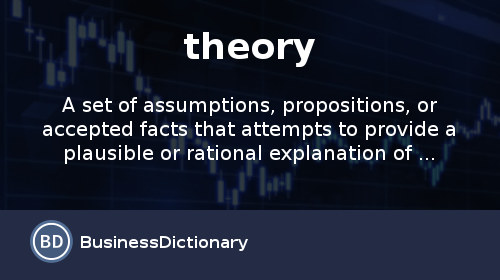Characteristics of a Good Theory and It's Approaches

Image Source
Theories are simplified and frequently halfway explanations of complex social reality. There can be good explanations or poor explanations, and thus, there can be good theories or poor theories. How might we assess the goodness of a given theory?
Criteria of good theory
Logical Consistency
The four building blocks of theory should be logically reliable with each other. When a portion of these building blocks of a theory are conflicting with each other, at that point the theory is a poor theory.
Explanatory Power
What amount does a given theory clarify reality? Good theories clearly clarify the objective phenomenon superior to match theories, as frequently estimated by fluctuation clarified an incentive in relapse conditions.
Falsifiability
English philosopher Karl Popper expressed in the 1940's that for theories to be legitimate, they should be falsifiable. Falsifiability guarantees that the theory is conceivably disprovable, if observational information does not coordinate with theoretical propositions, which takes into account their exact testing by researchers. Theories can't be theories unless they can be observationally testable.

Image Source
Falsifiability requires nearness of opponent explanations it guarantees that the constructs are satisfactorily measurable, et cetera. Saying that a theory is falsifiable isn't the same as saying that a theory ought to be misrepresented. In the event that a theory is to be sure misrepresented in view of observational confirmation, at that point it was presumably a poor theory in any case!
Parsimony
Parsimony looks at the amount of a phenomenon is clarified with what a limited number of variables. The idea is ascribed to fourteenth century English logician William of Ockham, which expresses that among contending explanations that adequately clarify the watched prove, the easiest theory is the best. Explanation of an intricate social phenomenon can simply be expanded by including an ever increasing number of constructs.
Such approach invalidates the point of having a theory, which are expected to be simplified and generalizable explanations of reality. Parsimony identifies with the degrees of opportunity in a given theory. Parsimonious theories have higher degrees of opportunity, which enable them to be all the more effectively generalized.
Approaches in making theory
- The first approach is called grounded theory building where theories are manufactured inductively in view of watched patterns of occasions or behaviors. It is called grounded theory building on the grounds that the theory is grounded in experimental perceptions. This method is vigorously reliant on the observational and interpretive capacities of the researcher, and the subsequent theory might be subjective and non-confirmable.

Image Source
The second approach to theory building is to lead a base up reasonable examination to distinguish distinctive arrangements of indicators pertinent to the phenomenon of enthusiasm utilizing a predefined system. One such structure might be a straightforward info process-yield system, where the researcher may search for various classifications of sources of info, for example, individual, authoritative, as well as technological factors conceivably identified with the phenomenon of intrigue, and portray the fundamental procedures that connection these elements to the objective phenomenon. This is additionally an inductive approach that depends vigorously on the inductive capacities of the researcher, and elucidation might be one-sided by researcher's earlier learning of the phenomenon being considered.
The third approach to speculating is to stretch out or change existing theories to clarify another context, for example, by stretching out theories of individual figuring out how to clarify hierarchical learning. While making such an expansion, certain ideas, propositions, and additionally boundary states of the old theory might be held and others changed to fit the new context. This deductive approach use the rich stock of social science theories created by earlier theoreticians.
The fourth approach is to apply existing theories in totally new contexts by drawing upon the basic similitudes between the two contexts. This approach depends on thinking by similarity, and is presumably the most innovative method for hypothesizing utilizing a deductive approach.

Image Source
References:
Theory
Karl Popper: Philosophy of Science
Four Qualities of a Good Theory
Models and Theories
Posted from my blog with SteemPress : https://steemme.000webhostapp.com/2018/06/characteristics-of-a-good-theory-and-its-approaches
You got a 31.19% upvote from @brupvoter courtesy of @dianargenti!
Downvoting a post can decrease pending rewards and make it less visible. Common reasons:
Submit